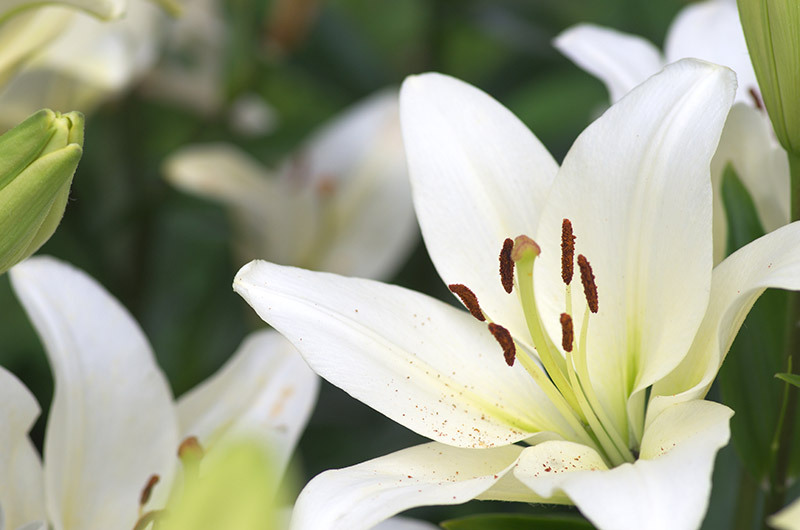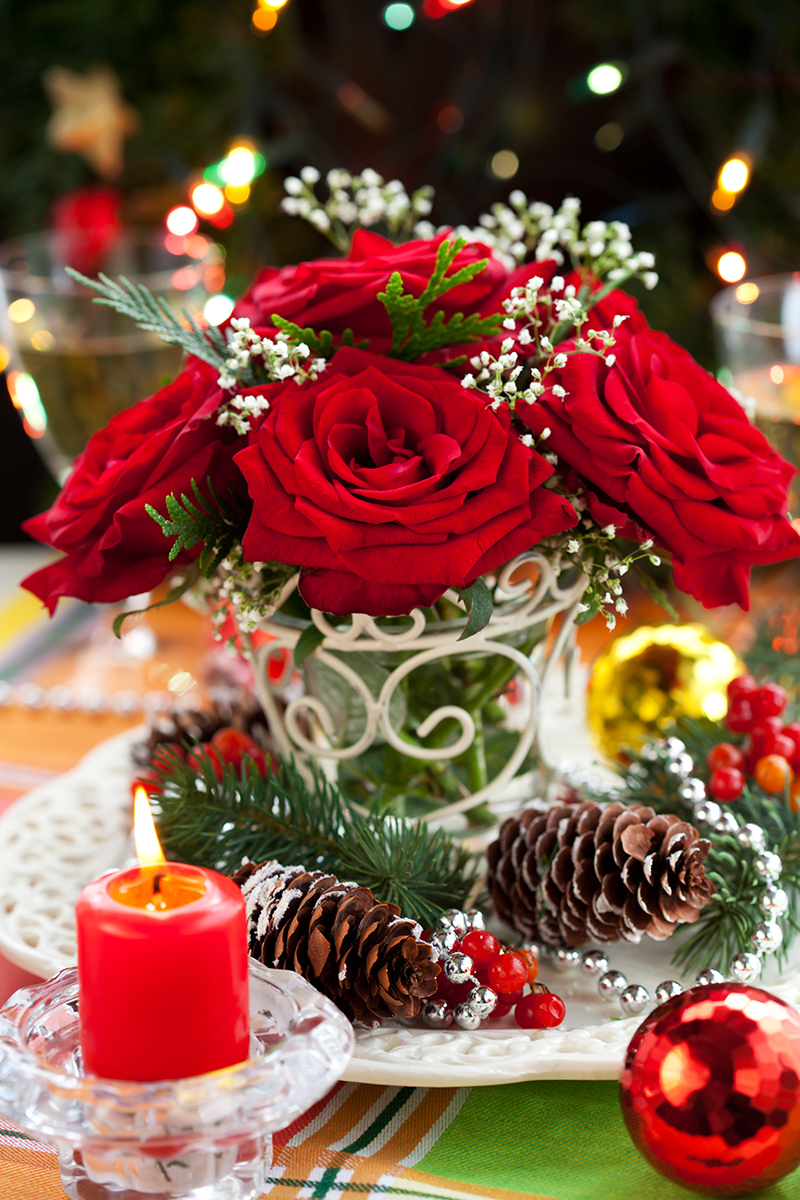Unveiling tulip secrets: 7 facts you haven't heard
Posted on 02/09/2025
Unveiling Tulip Secrets: 7 Facts You Haven't Heard
Tulips are among the most cherished flowers worldwide, symbolizing beauty, love, and renewal. But beyond their vibrant displays and annual spring performances, tulips conceal a treasury of secrets that few aficionados, gardeners, or flower enthusiasts know. This comprehensive article pulls back the petals to reveal unusual tulip facts you most likely haven't heard before. Whether you're a horticulturist or a curious reader, prepare to explore the captivating world of tulips with these seven hidden facts.
1. Tulips Originated Far From the Netherlands
Ask anyone about tulips, and the Netherlands instantly comes to mind. While it's true that Dutch flower fields are now synonymous with tulip blooms, the origin story is far more exotic.
Central Asian Roots
The history of tulips stretches back to the mountains and steppes of Central Asia. Areas now known as Kazakhstan, Uzbekistan, and parts of northern Iran and Afghanistan are the true home of tulip species. Nomadic Turks cherished the wild ancestors of our cultivated tulips for centuries, and they even introduced them to the Ottoman Empire.
- Wild tulip species often appear shorter and have patterned petals, in contrast to the elegant hybrids you see in modern gardens.
- Tulip genes from these regions still play a role in modern tulip hybridization.
Unveiling this tulip secret reminds us of the global journey these flowers have taken before reaching Dutch flower fame!

2. The "Tulip Mania" Crash Resembled a Modern Economic Bubble
Another well-known tulip tale is Tulip Mania in 17th century Holland, yet the incredible details of this financial frenzy are not widely discussed.
The True Depths of Tulip Mania Secrets
During the 1630s, rare tulip bulbs reached astronomical prices in a speculative craze. Single bulbs could sell for nearly ten times the annual earnings of a skilled craftsman. The craze was so pervasive, people traded homes, livestock, or land for certain bulbs!
- Contracts were often written for tulip futures, making it one of the first known futures markets.
- It didn't last. By 1637, the bubble spectacularly burst, wiping out fortunes overnight.
- Some tulip varieties that sparked the craze are now extinct, adding an extra layer of mystique.
Tulip Mania remains a cautionary economic tale, showing how a simple flower could change the course of financial history.
3. Broken Tulips: Nature's Marbled Masterpieces
Perhaps the most unusual tulip fact revolves around so-called "broken tulips". These varieties display eye-catching flame-like streaks in their petals.
The Virus Behind the Patterns
What most people don't know is that:
- These stunning patterns are caused by a virus - specifically, the tulip breaking virus.
- The virus disrupts pigment production, leading to unpredictable streaks, blotches, and feathering.
- Once celebrated for their beauty during Tulip Mania, these tulips are now seen as fragile collector's items due to their viral infection.
Modern cultivation discourages the intentional spread of this virus, though its memory is preserved in paintings from the Dutch Golden Age.
4. Tulip Flowers Were Once Eaten and Used for Medicine
Here's a surprising tulip secret--these beloved ornamental flowers have also served as emergency food and medicine.
Tulips as Survival Food
During World War II, particularly in the Netherlands' "Hunger Winter" of 1944-1945, tulip bulbs were cooked and eaten by starving populations. People boiled the bulbs, made flour, or cooked them in stews for sustenance.
- The taste is described as bland-to-bitter, and eating too many can cause stomach upset.
- Some people experienced allergic reactions from the glycosides present in tulip bulbs.
- Despite this, tulips saved lives in desperate times.
Historical texts also reference tulip extracts for medicinal use. While *they are not recommended* for consumption today, these stories mark an extraordinary chapter in tulip history.
5. Tulips Change Color with Soil and Weather
We often think of tulips as having steadfast colors, but--in another hidden tulip secret--the hue of some tulip varieties can change depending on soil pH or spring temperature fluctuations.
Unraveling the Science Behind the Color Shift
- Anthocyanins (pigments in tulip petals) react to different environmental factors, subtly shifting shades.
- Cooler springs can intensify reds and purples, while warmer weather may soften tones.
- Soil pH can influence the vividness of blues, purples, and pinks, much like with hydrangeas.
Gardeners around the globe are often surprised to find their tulip beds evolving from year to year. It's an enchanting secret of the tulip world and makes each bloom season uniquely beautiful.
6. There Are More Than 3,000 Registered Tulip Varieties
The vast diversity of tulips stretches far beyond the iconic single red or yellow bloom. In fact, over 3,000 registered tulip varieties exist today, with new hybrids developed each year.
Types of Tulip Secrets by Category
- Single Early: Classic, cup-shaped, and some of the first to bloom in spring.
- Double Late: Also known as peony-flowered tulips, they feature lush, multi-petaled flowers.
- Fosteriana and Greigii Tulips: Known for unique foliage, early blooms, and vibrant patterns.
- Fringed Tulips: Boast spectacularly serrated petal edges.
- Parrot Tulips: Wildly feathered, twisted petals available in exuberant colors.
This astonishing diversity results from centuries of selective breeding, dating as far back as the Ottoman and Dutch Empires. Every tulip variety comes with its own hidden story, waiting to be discovered by passionate gardeners and collectors alike.
7. Tulips Symbolize Far More than Love or Spring
The cultural symbolism of tulips is as rich as their diversity. While tulips are widely associated with spring or romance, their meanings run much deeper across different societies.
Tulip Symbolism Across Cultures
- Ottoman Empire: The tulip was the emblem of power, paradise, and the fleeting nature of beauty--giving rise to the celebrated "Tulip Era."
- Persian Literature: In poetic works, tulips symbolize perfect love and martyrdom.
- Dutch Culture: Tulips stand for prosperity, abundance, and pride, still central to cultural celebrations such as the world-famous Keukenhof festival.
- Even in modern emojis and gifts, different tulip colors carry specific meanings; for example, yellow tulips often denote cheerful thoughts, while white tulips stand for forgiveness.
From ancient scrolls to contemporary art, tulips have woven their way through human stories, carrying messages that transcend the garden.

How to Choose, Grow, and Care for Your Own Tulip Collection
Now that you're equipped with these fascinating tulip revelations, why not bring a touch of their mystery to your own garden? Here's a concise guide to selecting, planting, and maintaining your tulip bulbs--while respecting their storied and secretive heritage.
Tulip Growing Tips for Beginners
- Timing: Plant tulip bulbs in the autumn, 6-8 weeks before the ground fully freezes.
- Depth: Set bulbs about 6 inches deep, with the pointed end facing up.
- Spacing: Allow 4-6 inches between bulbs for ample blooming room.
- Soil: Use well-drained, loose soil to prevent bulb rot.
- Sunlight: Tulips thrive in full sun but will tolerate partial shade.
- Watering: Water well upon planting; then, let natural precipitation do the rest unless the season is unusually dry.
To cultivate rare or heirloom tulip varieties, contact reputable bulb companies or botanic gardens with specialty collections.
Preserving Tulip Mysteries and Tradition
Many gardeners are now interested in conservation efforts for wild tulip species threatened by habitat loss. By supporting these programs, you can actively participate in preserving the remaining secrets of tulip diversity.
- Consider planting wild-type tulips to encourage genetic diversity.
- Learn about the history and symbolism of your chosen tulip as part of your garden journey.
- Share rare stories from this article to ignite a new appreciation in your community or garden club.
Conclusion: Celebrate the Timeless Allure of Tulips
From Central Asian mountain slopes to the intricate paintings of Dutch masters, tulips have swept across cultures and centuries carrying secrets almost as colorful as their petals. By uncovering these hidden tulip facts--from their unexpected origins to their role as survival food, economic catalysts, and cultural emblems--you can enjoy these exquisite blooms with fresh eyes.
So, the next time you stand before a field of tulips or a single vase-stemmed beauty, remember: behind every bend and swirl of color lies a story, a secret, and an invitation to unravel the greater mysteries of the natural world.
Explore, share, and celebrate the rare wonders of tulips--nature's most enigmatic flower.
Latest Posts
Unraveling the Mystery of Valentine's Day Red Roses
Unveiling tulip secrets: 7 facts you haven't heard
Unravel the Secrets of Your Birth Flower and Its Symbolism






